Статьи журнала - Siberian Aerospace Journal
Все статьи: 363
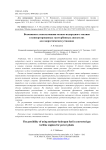
The possibility of using methane-hydrogen fuel in converted gas turbine engines for power plants
Статья научная
Taking into account the fact that recently the topic of using methane-hydrogen mixtures as a fuel for gas turbine engines used in power plants has been actively developed, it is necessary to have engineering methods for calculating the fuel system and combustion chamber of engines operating on such fuel. The paper proposes the methodology that allows performing such calculations. A gas turbine unit (GTU) based on a converted aircraft engine NK-16ST was taken for the calculation. The calculation according to this method is carried out in three stages. At the first stage the composition is selected and the thermophysical characteristics of the gas under consideration are determined. At the second stage the fuel system is calculated, the consumption characteristics of the engine fuel system and the combustion chamber system are built. The consumption characteristics built for natural gas and for methane-hydrogen mixture are compared. The analysis makes it possible to develop recommendations for optimizing the design of the fuel supply equipment and fuel nozzles in terms of changing the volume of internal channels. At the third stage the combustion chamber is calculated and recommendations about the need to change the flame tube head or redistribute air along the flame tube length are made. The volumetric heat intensity parameter is used to estimate the sufficiency of the available volume of the flame tube for operation on methane-hydrogen mixture and to determine the gas average temperature in the combustion zone of the combustion chamber. The possibility of operation of the NK-16ST gas turbine unit on a methane-hydrogen mixture was confirmed on the basis of the results of the work performed. It was also concluded that in order to supply large volumes of methane-hydrogen mixture in comparison with natural gas, it is required to increase the size of fuel pipelines, metering and control units and fuel nozzles.
Бесплатно
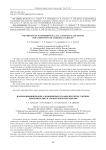
The process of nanomodifying cast aluminum alloy ingots for components of aerospace vehicles
Статья научная
Currently, increasing attention has been paid to such a class of materials as nanopowders (NP) of chemical compounds, which are ultra-thin formations of not more than 100 nm in size. Such attitude to these materials is explained by the fact that they have unique physical, chemical and mechanical properties significantly different from the properties of materials of the same chemical composition in a massive state, and these properties can be transferred to some extent from them or with their participation to the products. The existing methods of introducing NP into metal melts could not be used due to their special properties in comparison with coarse powders, and therefore a new method of their introduction into the melt was developed, excluding direct contact of NP particles with oxygen and unhindered penetration of particles into the melt through the oxide layer. The essence of the method was as follows. In the aluminum container filled up with aluminum particles or deformable aluminum alloys D1 or D16 and various NP (nitrides, carbides, oxides, etc.), and this composition was pressed into the rod, with its help NP was introduced into the melt during casting of aluminum ingots and deformable aluminum alloys. The results of the study showed that this excludes the appearance of cracks in the ingots, as well as improves their technological and mechanical properties.
Бесплатно
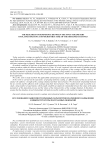
Статья научная
Today, protective coatings are applied to almost all parts and components of engineering products in order to ensure high performance properties of machines, with the lowest economic cost. The method of plasma spraying allows to apply heat-resistant coatings on a different kind of basis, in addition to a wide variety of materials. Therefore, rocket and space engineering is primarily interested in the method. In modern conditions of high rate of mechanical engineering development engineers must develop and put into operation products within the shortest possible period of time. As a rule, engineers select the modes of plasma spraying using the method of selecting the empirical relationship between the properties of the coatings and the values of the specified parameters of plasma spraying, which suggests conducting a huge number of experiments. That is why we see the need to find new methods for selecting the plasma spraying parameters, which are based on mathematical and analytical apparatus. We set the task to study and show the applicability and prospects of the proposed method. In the work we carried out the operations of spraying nichrome coating, at different values of the arc current. We studied the adhesive strength of the coatings obtained and their microstructure. We showed the relationship between the arc current and the adhesion of the coatings using their microstructure. These studies have made it possible to exclude a large number of experiments, which usually establish an empirical relationship between the values of the input parameters of the deposition process and the values of the characteristics of the coatings obtained. In the future, we assume that the database of such relationships will make it possible to fully use this method in engineering industries.
Бесплатно
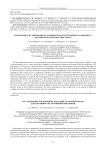
Статья научная
The most important resource for improving the performance of parts is the reduction of the surface roughness. One of the promising ways to reduce the surface roughness is the abrasive extrusion processing. When developing the AEP technology, it is necessary to know the flow rate (pressure) of the WE, which depends on the viscosity of the latter. In turn, the viscosity of the WE is determined by its temperature. The temperature of the working environment at AEP can be calculated if the coefficients of thermal conductivity and thermal diffusivity of the WE are known. The working environment for AEP consists of two components, therefore, the coefficient of thermal conductivity can be calculated by known formulas. However, the calculation error is significant, therefore, the experimental determination of the abovementioned coefficients is required. The installations for the coefficients research have been presented, the methods of conducting experiments have been developed. After mathematical processing of the experiments results by means of the AdvanceGrapher v. 2.11, the dependences of the thermal conductivity and thermal diffusivity on the abrasive concentration have been obtained. The studies of the thermophysical properties of the working environment have shown that the values of thermal conductivity and thermal diffusivity of the WE are mainly determined by the concentration of abrasive grains in the working environment. The direct dependence of these coefficients on the degree of filling the working environment with abrasive grains has been established.
Бесплатно
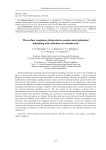
Статья научная
Electrical discharge machining and electrochemical machining of metals are used in the production of parts for aircraft and rocket technology, especially electrical discharge machining. A type of electrical discharge machining, electrical contact machining, is used in metallurgy. The paper investigates a combined method of metal machining, including electrical contact and electrochemical methods using vibration of the electrode tool. This method is used for copying and piercing operations in the manufacture of parts from metals that are difficult to machine mechanically. The peculiarity of the above-mentioned method of electrical machining is the formation of surface roughness of the metal being machined due to anodic dissolution and the electrical discharge machining process. The side surface of the workpiece is formed due to electrochemical processes. The end surface is formed due to electrical contact machining. Based on literature data for pulsed electrochemical machining and experiments, expressions for calculating the roughness parameter of the side surface are obtained. The formula takes into account the time of anodic dissolution for one period of oscillation of the cathode tool, the voltage on the electrodes and the concentration of the electrolyte. The calculation of the roughness parameter of the end surface is carried out similarly to the expression for electrical discharge machining, but instead of the duration of the electric pulse, the duration of contact of the electrodes is used. The experiments carried out confirmed the correctness of the expressions used and made it possible to obtain the dependence of the coefficient on the vibration frequency of the cathode-tool.
Бесплатно
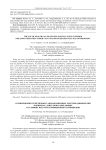
Статья научная
Today, the scope of application of electric propulsion systems for orbit correction and spacecraft’s attitude control is rapidly expanding due to their high efficiency compared to liquid jet systems. The main elements of electric jet systems are plasma or ion thrusters. To ensure power supply of such thrusters, complex electronic power processing systems – power processing units (PPU) – are used. These units are capable to operate for a long time (up to 15 years or more) in a high vacuum environment and generate sufficiently high accelerating voltages – from 300 V and higher. PPU’s comprise various EEE-parts, mainly in the case design. As a rule, the technology of their production is such that air or nitrogen is initially located inside the housing at atmospheric pressure. During the operation of the unit, the non-absolute hermeticity causes pressure decrease inside EEE housings. Due to high voltages applied, this can lead to electrical breakdowns between current-carrying ele-ments inside the parts, their failure with the subsequent failure of the functional blocks of the unit. The paper considers the physical principles of the breakdown occurrence inside EEE-parts cases. The results of non-hermiticity measurements of several types of HV EEE-parts are presented. The dynamics of the pressure drop to the values dangerous from the point of view of breakdown event and the relevant occurrence duration are esti-mated. It is shown that duration of being exposed to the pressure-dangerous conditions can be as long as space-craft service lifetime. It can make difficult to use packaged gas-filled EEE-parts at the level of units intended to operate in non-pressurized compartments of spacecraft. Recommendations are provided for selecting the design of EEE parts with an operating voltage of about 300 V or more, as well as circuit solutions used to develop high-voltage equipment intended to operate in vacuum environment.
Бесплатно
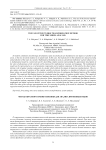
The use of the inverse transformation method for time series analysis
Статья научная
In modern conditions of technology development, signs of systemacity are manifested to one degree or another in all areas, so the use of system analysis is an urgent task. In this case, the main factors in this situation are data processing and prediction of the state of a system. Mathematical modeling is used as a prediction method for a given subject area. A mathematical model is a universal tool for describing complex systems representing the approximate description of the class of phenomena of the external world expressed by mathematical concepts and language. The mathematical model can be represented as a set of systematic components and a random component. In this article, the object of prediction is the irregular random component of a model, which reflects the impact of numerous random factors. The origin, nature and laws of variation of the random variable are known, therefore, to simulate its behavior or predict its future value, one needs high degree of certainty to establish the form of continuous distribution function of the random variable. The empirical distribution function is calculated using the sample of random variable values. This empirical function is close to the values of the desired unknown function of distribution. The resulting empirical function is discrete, therefore it is necessary to apply piecewise linear interpolation to obtain a continuous distribution function. The predicted random component of time series has been included in the initial regression model. In order to compare augmented and initial regression models, several values were excluded from the time series and new prediction was built. The value of the average approximation error for assessing the quality of the model is calculated. The augmented regression model proved to be more effective than the original one.
Бесплатно
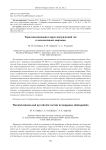
Thermal emission and pyroelectric current in manganese chalcogenides
Статья научная
Manganese chalcogenides, which are promising for the manufacture of thermoelements, are being studied. The current is measured in the temperature range of 80–500 K, in the absence of external voltage, which can be caused by a temperature gradient (thermopower), a change in electrical polarization (pyroelectric current), piezoelectric current (when the sample is deformed, a potential difference arises) or thermionic emission (thermal emission current) . Temperatures of current anomalies and their relationship with thermionic current and polarization current are found. A change in electrical polarization with temperature will cause a pyroelectric current. Compensation for excess electrical charge will result in local electrical polarization. Partial decompensation will cause the formation of an electric field in the sample. The critical temperatures for the disappearance of electric polarization were determined for different concentrations. In the region of concentration of thulium ions flowing through the lattice, the activation nature of the thermionic current was established and the activation energy was found. The pyroelectric current has a smaller value compared to the thermionic current. The current mechanism is determined by the emission of electrons from deep traps and the temperatures of the maximum thermionic current correlate with the temperatures at which IR absorption disappears. The electric current density and its value depend on the type of substituted rare earth element are calculated.
Бесплатно
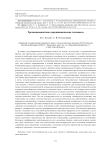
Three-component aerodynamic load cells
Статья научная
The article examines the effect of flow on models studied in wind tunnels. To determine the force effect of the flow on the model under study, a more accurate and reliable method of directly measuring forces and moments using aerodynamic strain gauge balances is proposed. When solving a plane problem for a symmetrical model at zero slip angle, a design of three-component scales is proposed that measures the lift force, the drag force and the pitching moment. To eliminate the interaction between the supporting devices and the model, which causes disturbances in the flow near the model, the scales are located outside the model and the working part of the wind tunnel. The components of the aerodynamic force and moment acting on the model are measured using resistance strain gauges, which convert the deformation of the elastic element into a change in electrical resistance, which is measured by an instrument connected to an appropriate measuring circuit. The choice of strain gauges as weight elements is due to their very small size and weight, the ability to measure very small relative deformations of elastic elements, low inertia, which makes it possible to measure not only static but also dynamic loads, and the possibility of remote measurements. To compensate for the influence of various sources of errors, increase sensitivity and ensure greater measurement accuracy, the strain gauges are connected via a bridge circuit and included in all four arms of the bridge. Deformation of the horizontal measuring beam causes a change in resistance not only in the strain gauges that measure the pitching moment, but also in the strain gauges designed to measure the lift force. Since the design of the scales does not allow for electrical separation of these components, the influence of the pitching moment on the magnitude of the lift force is determined during the calibration process and is assessed using a special influence graph constructed from the results of calibration data. In strain gauge measurements, the output values of forces and moments acting on the model under test are obtained in the form of corresponding readings from a device that measures electrical signals proportional to the applied forces. To convert instrument data into values of forces and moments, a joint calibration of scales and instruments is carried out in order to obtain calibration coefficients. Additional components of aerodynamic forces and moments created by the holder are determined by purging it in the presence of the model. Calculated dependencies for determining the components of the aerodynamic impact are given. The values of the coefficients of aerodynamic forces and moments are given in the flow coordinate system. The pledge has been given.
Бесплатно
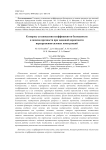
Статья научная
Ensuring high reliability of unique high-critical products at the design stage is an actual task that the aerospace industry faces. For high reliability indicators, at the design stage, it is necessary to ensure the basic property of the product – its strength, with a high probability of non-destruction. It is provided by introducing the corresponding coefficients – «safety coefficient» and «margin of safety» into the strength calculations. The necessity in these coefficients is based on the spread of values of external loading factors: magnitude of forces, combination of forces, kind of actions, place of connection, etc. In this case, the safety coefficient is related to external factors. The margin of safety refers to internal factors: the spread of the mechanical characteristics of the product material, the spread of the geometric dimensions of the product, etc. To determine, with a given probability, the safety coefficient and margin of safety, it is necessary to know their dependence on the combination of spread of external and internal factors. The purpose of this work is to determine the mathematical connection between the internal factors of the spread and the safety coefficient, external factors of the spread and the margin of safety, the combination of these factors and the probability of non-destruction of structures. In this work the values of internal and external factors, which affect the strength and probability of non-destruction of the product and have the boundaries of the spread of their values, using the tools of probability theories, were characterized as random variables, the values of which are determined by the distribution density, expected value and variance. I this work there was found a high dependence of the product strength on the spread of its geometric characteristics and tools were defined to determine the total spread of the values of the main strength characteristics of the product with a given probability of non-destruction. The practical significance of the results of this work can be achieved in the aerospace industry, in particular, at the design stage of unique high-critical products.
Бесплатно
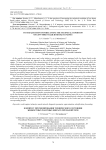
To the question of forecasting the technical condition of low-thrust liquid rocket engines
Статья научная
In the rapidly developing space and rocket industry, spacecrafts are being equipped with low-thrust liquid rocket engines. Нigh requirements are imposed on the reliability, efficiency and economy of fuel use for this type of rocket engine. To ensure monitoring of the characteristics of spacecrafts, a functional diagnostic system is used, which includes telemetry and analytical data processing. Telemetry performs the functions of receiving and transmitting information. Information processing is carried out in computer centers located on the spacecraft and the Earth. The most promising computing tool capable of predicting time series and classifying a large amount of interconnected data is considered an artificial neural network. In this regard, the subject of research in the work is data processing methods based on an artificial neural network. The purpose of the work is to develop a method for forecasting the technical condition of low-thrust liquid rocket engines using an artificial neural network. The relevance of research on the use of a neural network in the system of functional diagnostics of low-thrust liquid rocket engines for spacecraft is explained in the introduction. In the main part, an analysis of many telemetric data of the rocket engine is carried out and their strength in the forecast of the main diagnostic parameters is determined. It is proposed to use traction, specific impulse, and temperature of the structure as diagnostic parameters. The prognostic capabilities of the neural network were investigated and a schematic diagram of a method for predicting the technical condition of a low-thrust liquid rocket engine was developed. In the developed method, at the first stage, the neural network performs the approximation of the function and extrapolates the time series of telemetric data; the second stage determines the probable class of the technical condition of the engine. The conclusion outlines a plan for further experimental research in the study area and provides recommendations on the development and improvement of algorithms for functioning of artificial neural networks as part of the functional diagnostics system of the spacecraft. Due to the generalized nature of the methodological schemes, the results of the work can be applied to any type of rocket engines and used at all enterprises of the rocket and space industry of the corresponding profile.
Бесплатно
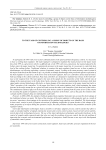
To the task of controlling a group of objects on the basis of information technologies
Статья научная
To participate the TPP with cross-section communications in the general primary frequency control, it is necessary to have a working main regulator. The main regulator is designed to maintain the steam pressure in the major steam line of the TPP at a given level, which is a difficult task. At the TPP with cross-connections, the steam produced by the boilers enters the major steam line. To maintain the pressure in the major steam line, it is necessary to control the heat load of the working boilers. Traditional solutions to construct the main regulator found no use, as have a number of disadvantages, not allowing exploiting a system of automatic control. Looking at the steam pressure control system in the major steam line from the bottom to up, it is possible to identify disadvantages that prevent the effective operation of the main regulator at each level. At the lower level of the main regulator, there are controllers of heat load of boilers, built according to the scheme task-heat. Heat load controllers are designed to maintain heat release in the boiler furnace at the required level. The heat signal is the sum of the signals for the steam flow of the boiler and the rate of change in the steam pressure in the boiler drum. Such a structure does not allow maintaining the invariance of the heat signal under external disturbances effectively, as sharp changes of the steam pressure in the major steam line lead to a "false" operation of the controllers. At the upper level there is the main regulator itself, which maintains the steam pressure in the major steam line at a given level and corrects the tasks to the controllers of the heat load of the boilers. The simultaneous identical effect on the heat load of the boilers cannot be optimal from the point of view of the criteria for assessing the quality of regulation, since the dynamic properties of the boilers, such as the gain, the transition time constant and the transport delay are individual for each boiler. However, in 2006–2008, the attempt to build an updated main regulator that takes into account the shortcomings of the traditional scheme was made. The basis of the structure of the main regulator is still parametric and, as a result of ten-years’ experience, shortcomings in the operation of the updated main regulator were identified. The shortcomings, in most cases, consist in need of frequent corrections of adjusting coefficients of system because of the change of dynamic properties of an object during the operation. In fact, the same problems related to the parametric structure of the regulator remain. Up-to-date information technologies made it possible to introduce adaptive process control systems that allow to count an extended number of signals entering the system and to form control actions, based on both current and historical data of the technological process. The use of the latest information technologies and modern hardware in the control of complex multi-connected units that solve not only the problems of process control, but also the problem of improving the economic and environmental performance of enterprises, should become a new step in the development of automatic control systems.
Бесплатно
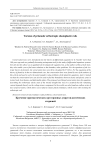
Torsion of prismatic orthotropic elastoplastic rods
Статья научная
Conservation laws were introduced into the theory of differential equations by E. Noether more than 100 years ago and are gradually becoming an important tool for the study of differential equations systems. Not only do they allow you to qualitatively investigate the equation, but, as the authors of this article show, they also enable you to find exact solutions to the boundary value problems. For the equations of the iso-tropic theory of elasticity, the conservation laws were first calculated by P. Olver. For the equations of the theory of plasticity in the two-dimensional case, the conservation laws were found by one of the authors of this article and used to solve the main boundary value problems of the plasticity equations. Later it turned out that the conservation laws can also be used to find the boundaries between elastic and plastic zones in twisted rods, bent beams, and deformable plates. The proposed work found conservation laws for equations describing the orthotropic elastic state of the twisted straight-line rod. It is assumed that the remaining current depends linearly on the voltage tensor component. In the workit was also found an endless series of laws of preservation, which allows you to find an elastic-plastic boundary, which arises when twisting the orthotropic rod.
Бесплатно
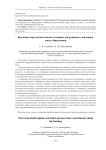
Turn of an elastic-plastic rod under pressure that varies linearly along the forming
Статья научная
The article continues a series of articles devoted to the use of the method of conservation laws of differential equations for solving problems in the mechanics of deformable solids. Elastoplastic problems in the mechanics of a deformable solid take into account the nonlinear relation-ship between stresses and deformations under the influence of various loads. Such problems arise in structures where materials are characterized by different physical properties; taking into account elastic-plastic deformations is important for predicting the operation of structures, as well as for ensuring their durability. Currently, solutions to elastoplastic problems continue to be the focus of researchers' attention. New analytical approaches to solving these problems are emerging, and numerical methods are being improved. The authors contribute to solving the problems of mechanics of deformable solids using conservation laws. The use of conservation laws makes it possible to reduce the finding of the stress tensor components at each point to a contour integral along the boundary of the region under consideration, which makes it possible to construct a previously unknown elastoplastic boundary. The article considers an elastoplastic rod of constant cross-section, which is under the influence of li-near hydrostatic pressure and a pair of forces that twist it around a central axis coinciding with the oz axis. The lateral surface of the rod is stress-free and in a plastic state. The constructed conservation laws allow us to find the components of the stress tensor. The components of the stress tensor make it possible to determine the elastoplastic boundary in the rod under consideration.
Бесплатно
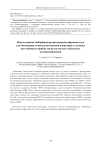
Статья научная
Autonomous navigation is very important in many fields and applications and it specifically depends on global positioning system (GPS) measurements which may not be accessible in some areas. This will directly affect the autonomous navigation and sequentially this will lead to problems according to the function of autonomous navigation. In this research, generalized regression neural network (GRNN) which is a variation to radial basis neural networks, was used to compensate global positioning system (GPS) measurements in case of GPS absences to increase accuracy of autonomous navigation parameters (basically location and velocity) of object. GRNN is integrated with loosely coupled Extended Kalman Filter (EKF). Location, velocity, orientation parameters and biases of sensors are estimated. The evaluation of this methods was conducted using dataset from Internet, two simulations for the GPS measurements outages were made (first outage periods were 35 and 60 seconds) to evaluate the behavior of GRNN, the results shows that using GRNN in GPS absence is effective and robust, it outperformed the only loosely coupled EKF method.
Бесплатно
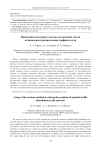
Using of the contour method to solving the problem of optimal traffic distribution in the network
Статья научная
The purpose of this work is to create a method for solving the problem of optimal traffic distribution in a network using the contour data analysis method. In the first section of the work, the principle of converting any available network to a contour form is explained, and the case is considered both for networks without loss and for networks with losses. The second section shows in a general way the method of bringing the network in contour form to a system of non-linear inequalities, by solving which one can obtain a certain distribution of traffic in the system. In the final section, using the M/M/1/N queuing system as an example, the solution of the problem of optimal traffic distribution according to the loss minimization criterion is shown. The initial data for the task were the incidence matrix, service intensity and buffer dimension for communication channels. A feature of the proposed algorithm is the search for a contour matrix, for the compilation of which it is proposed to use loss edges as elements of the spanning tree of the graph, which allows you to immediately determine the contour matrix using the concept of a fundamental cycle of a graph. This approach to optimal traffic distribution reduces the number of variables used compared to the known methods based on loopless routes, and also does not require their preliminary search, since they are determined from the dimension of the incidence matrix of the simulated network graph.
Бесплатно
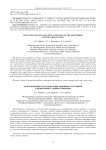
Using signals of navigation satellites in the monitoring of the Earth covers
Статья научная
The features and capabilities of remote sensing of earth covers by means of signals of navigation satellites are presented. The methods of reflectometry of the surfaces of earth covers and radioscopy of forest canopy are described. The options for using the signals of GLONASS, GPS systems are considered. Test measurements of interference diagrams were carried out on 5 test platforms from heterogeneous soil surfaces: salt marshes and asphalt; water surfaces of saline and freshwater bodies in summer, including ice cover of small thickness in the period of autumn freeze-up. The method of radioscopy helped obtain the data on the spatial and temporal characteristics of attenuated signals of the GLONASS and GPS satellites in the pine forest. Estimates of the linear attenuation coefficients of the signals passing through a forest canopy with a coordinate reference were made. The results obtained are the basis for the development of methods and technologies for continuous monitoring of the characteristics and state of earth covers by means of signals of navigation satellites for solving a wide range of applied tasks.
Бесплатно
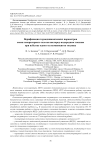
Статья научная
Liquid gas generators (LGG) are additional firing units in the power system of liquid rocket engines (LPRE). The LGG ensure the operation of the power units of the turbopump unit (TPU) of the engine by feeding combustion products (CP) to the turbine drive. The main criteria for the efficiency of the generator gas is the complex (RT)gg and the thermodynamic properties of the mixture, depending on temperature, pressure, the degree of excess of the oxidizer and the enthalpy of the fuel, attributed to the conditions of supply to the nozzles of the GG. Changing the parameters of the generator gas leads to a change in the turbine power parameters due to its effect on the adiabatic operation of the Lad turbine. Depending on the engine circuit under consideration, CP GG can perform work in other units and elements of the engine, as well as influence many parameters of the LPRE. Among the main ones can be noted: the power of the booster gas turbine of the booster turbopump unit (BTPU) in the case of the selection of the generator gas after the GG or turbogas after the main turbine; the temperature of heating the refrigerant in the heat exchanger introduced in the GG; specific impulse of a liquid rocket propulsion system (LRPS), depending on the quantity and properties of the turbogas entering the exhaust pipe of the engine (for the engine circuit without afterburning the generator gas); mixing in the combustion chamber (CC) due to afterburning of turbogas entering the engine chamber after the turbine (for the engine circuit with afterburning of generator gas); parameters of the firing wall of the engine in the case of using a high-temperature gas curtain by blowing generator gas into the supersonic part of the nozzle. For many pairs of fuel during combustion in GG, the nonequilibrium of combustion products is characteristic (especially in hydrocarbon fuels).Due to the fact that the combustion products (CP) during the combustion of an oxygen-hydrogen mixture, due to the simplicity of the reaction, have time to form while staying in the GG (i.e., the time of chemical equilibrium of the CP is less than or equal to the time of stay in the GG), their thermodynamic parameters can be reliably determined using programs that simulate chemical equilibrium reactions. In this article, the issue of obtaining reliable results of thermodynamic calculations of generator gas at low and high coefficients of oxidant excess is investigated. Verification of parameters obtained in the programs “Astra” and “Rocket Propulsion Analysis” with calculated values was carried out. The most suitable program for performing engineering calculations and modeling the thermodynamics of liquid gas generators has been determined.
Бесплатно
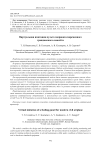
Virtual imitation of a fueling panel for modern civil airplane
Статья научная
The article considers the design and development of a computer model of the fueling monitoring and control panel of the Sukhoi SuperJet 100 civil aircraft. The presented model is included in a simulator program for training technical specialists in aircraft maintenance skills under conditions of limited access to real or hardware-simulated equipment. In the process of designing of the presented simulation model, the refueling panel and the SSJ-100 aircraft refueling system sufficient components were considered and selected for further software implementation. The selection of the necessary components for the model was carried out using the decomposition method of the real system. First, the functional elements of the refueling panel itself were selected, after which the refueling system was disassembled into components that allow simulating the operation of the simulated panel. To implement the simulation model, software classes of objects and interactions between them were described. Software algorithms are implemented in the Unity environment using the C# language. The created program uses a three-dimensional graphic component and compiled for launching on a web browser. Software components have also been developed that allow studying the functions of the fueling panel both independently and in the mode of control of knowledge of the elements and algorithms for working with the fueling panel. The developed model is used as part of a practical simulator at the Reshetnev Siberian State University, and can be functionally expanded in the future.
Бесплатно
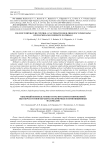
Volume temperature control at automated high-frequency processing of polymer and composite materials
Статья научная
The purpose of this work is to develop and justify a method for volumetric temperature control of a polymer and composite material in automated high-frequency processing. The developed method is implemented by in-troducing thermocouples into the prism-shaped or cube-shaped sample body according to a certain pattern of their location throughout the volume. This technique is cost-effective and easy to implement compared to expen-sive and specialized equipment with complex design, as well as to the cost of thermocouples having a simple de-sign. Methods to achieve the purpose of the research of the contact method of volumetric temperature of a polymer or composite sample control are development and outlining thermocouples throughout the volume so as to iden-tify the most accurate temperature spectrum of the polymer or composite sample during automated high-frequency processing. Another method to achieve this purpose is the method of finding out how it will affect the measurements accuracy of the heating sample temperature from the introduction of thermocouples by making holes in it for installation. For this, a finite-difference mathematical calculation of the dependence of the sample temperature on the number of holes for thermocouples in it was performed in the MSC Patran Sinda software package. The calculation results were summarized and presented on graphic data. Further, a general mathemat-ical calculation was performed according to the formulas for the process of heat and mass conductivity calcula-tion, the results of which were table and graphic data. At the end of the finite-difference and general mathematical calculation, a comparative analysis of the ob-tained error of temperature measurement from the introduction of thermocouples into the body of the sample was performed. Based on this analysis, the developed method is applicable for further research on automated high-frequency processing of polymer and composite materials, since the errors obtained do not exceed the permissi-ble 3 %.
Бесплатно

